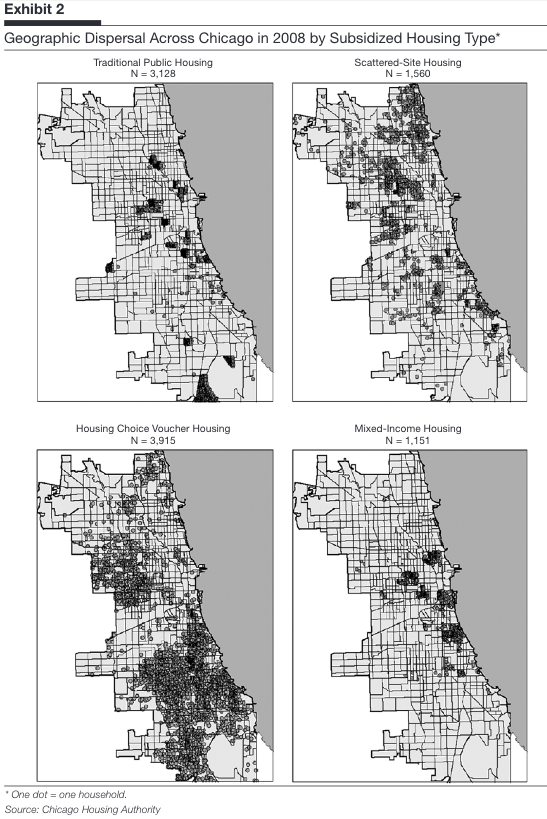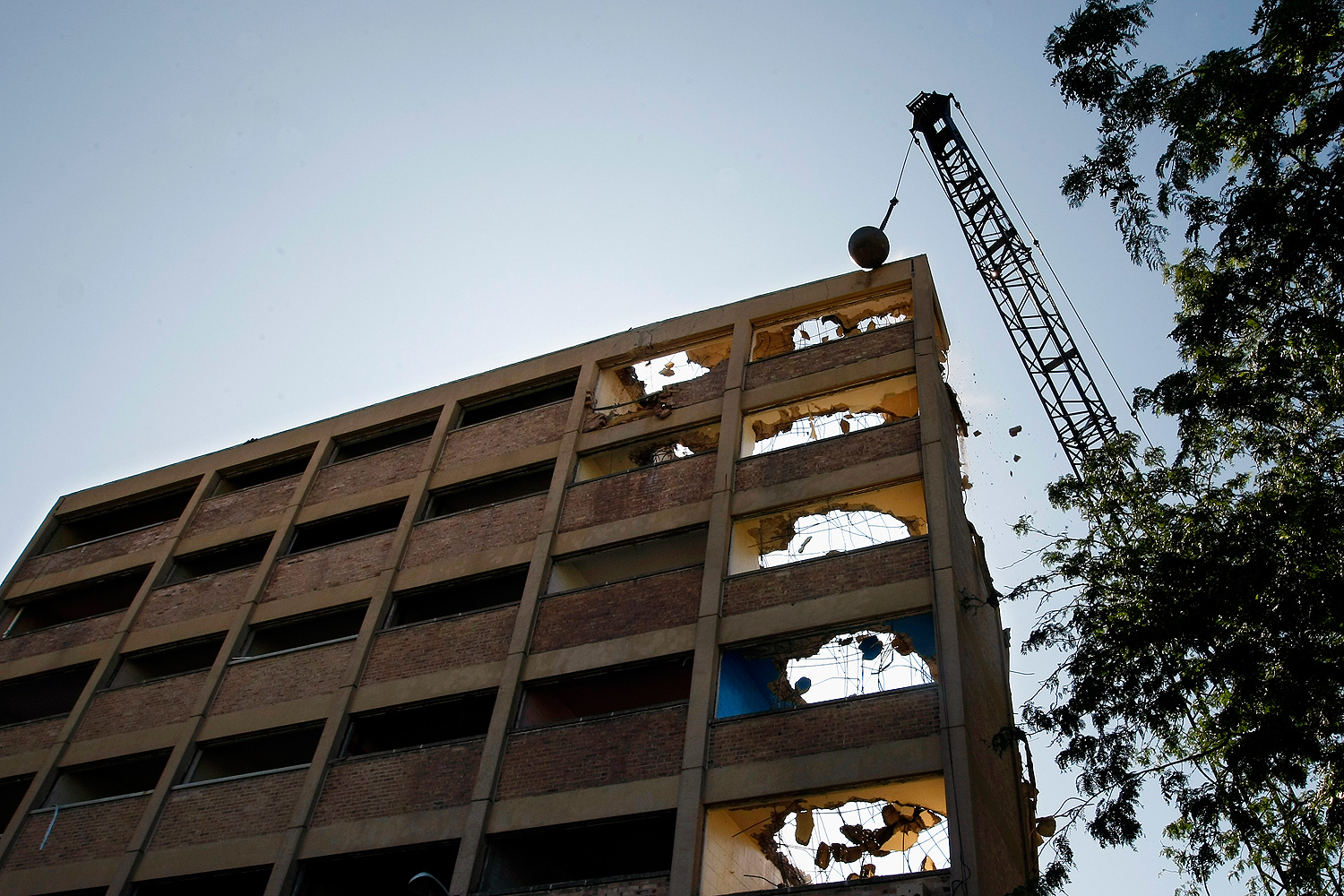I've heard Chicago's Plan for Transformation described as the largest migration of people in modern America outside of the displacement caused by Katrina. But it was an odd sort of migration: tens of thousands of people forced out of their homes, but in the hopes that they would find better conditions than the city's high-rise housing, given (some) resources to do so, and not being forced to migrate very far or anywhere in particular.
The dispersal of CHA residents hasn't meant that they've just vanished. On the contrary, research on the outcomes of Moving to Opportunity continues to pour out, most recently a long-term study co-authored by the U. of C. Crime Lab's Jens Ludwig.
More on that later, but I stumbled across an excellent map of what happened, geographically, when Chicago's high-rise public housing came down, from a report led by the U. of C.'s Robert Chaskin in the HUD journal Cityscape. Here's how things looked in 1999, with staggering concentration in a handful of neighborhoods, particularly in the near southeast on the footprint of the old Black Belt.

By 2008 the traditional, dense public housing population had declined by about 10,000 people. And they did disperse, but in familiar patterns.

The authors note a surprising reversal: "The average proportion of African Americans in scattered-site housing census tracts was only 37 percent, compared with 71 percent for mixed-income household tracts and 79 percent for traditional public housing development tracts. With an average tract population that was 85 percent African American, HCV [housing choice voucher] holders were actually now more racially segregated than those in traditional public housing developments."
What happened? Here's a good primer—in short, a combination of old patterns and new restrictions, and an example of how segregation becomes submerged within policy.



